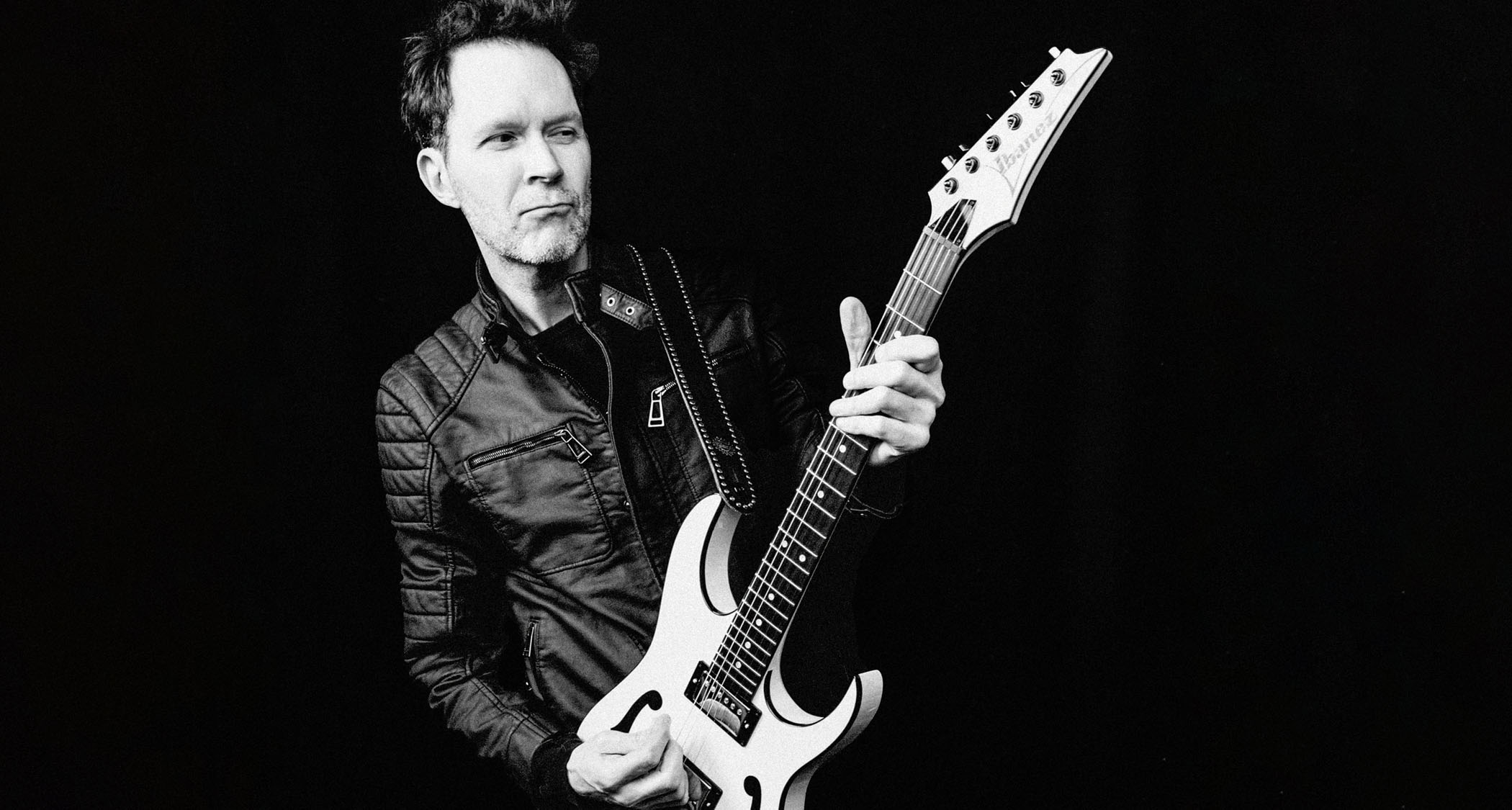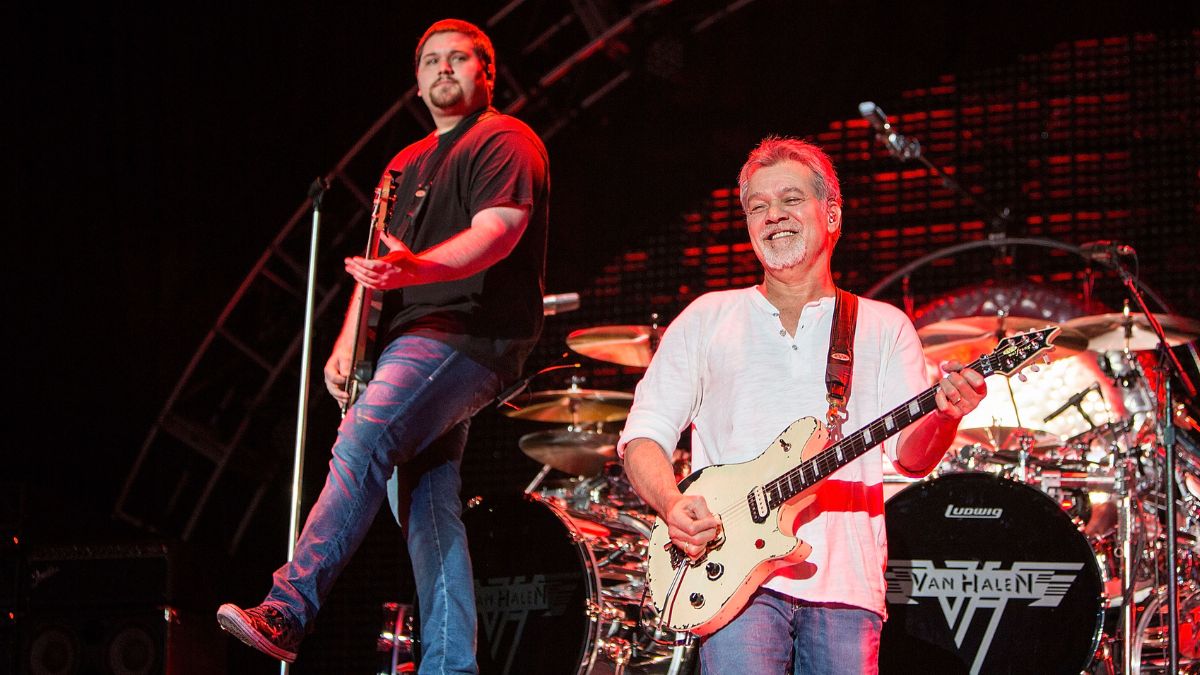“Whenever a guitar student of mine brings up BPMs, I’m like, ‘Oh no!’ That mindset is not a musical mindset... that’s the wrong door to get in the building”: Paul Gilbert is teaching guitarists how to become musicians
Shred’s original Mr Big takes us down memory lane and back to the present, as he tells us about his evolution as a player and a teacher

Paul Gilbert made his name in the ’80s as one of the fastest shredders around. But in his recent solo albums he’s focusing on melody. In hard rock group Mr. Big he’s still perfecting the art of the quick-action solo. And while he retains a side hustle as a tutor, he’s still learning new tricks…
What guitar did you cut your teeth on?
“It was a Stella acoustic. I didn’t know anything about scalings, but it was a bit of a short scale, which was kind of good because I was about nine! I had big hands for a nine-year-old, but still, small hands in general. So, it was a lucky accident that I ended up with a student guitar. I didn’t even know how to tune it, and I solved that by only using the bottom E string for about two years!”
What was the big game changer for you in your early years?
“Figuring out how to tune was a big deal! And then I learned how to downstroke because I only played upstrokes for the first two years, so learning about other fingers was great because I’d only been using my middle finger.
“But the advantage of using such primitive tools, only upstrokes and one string, was I got good at that. As an eleven year-old, I probably had as much authority over those things as I do now, which made me feel confident when I was learning something new.”
Which guitarist is your biggest influence?
All the latest guitar news, interviews, lessons, reviews, deals and more, direct to your inbox!
“I love to listen to other instruments, singers, and piano players, like Oscar Peterson. But I’ve always liked Eric Johnson and Allan Holdsworth. They’re not new players, but they kind of remind me of each other with a similar feel.”
With Mr. Big there’s a singer, but with my own stuff I play the vocal melodies on guitar, so I like to find ways to do that
In terms of technique, what’s the last new trick that you learned?
“Oh, just five minutes ago I was figuring out the chords for Constant Craving by k.d. lang. She sings the melody, and a moment later there’s a harmony that answers and they don’t happen at the same time. It’s like a call-and-response thing, and that’s been my passion lately.
“With Mr. Big there’s a singer, but with my own stuff I play the vocal melodies on guitar, so I like to find ways to do that. And also slide – which is a very recent development in my playing. It’s a new sound that I couldn’t do before, but I realised, ‘Wow, I can play slide – and it’s in tune!’ I’m best known for whipping through scale patterns, so to have that new element and a strong melody is thrilling to me because it’s opening up a brand-new door in the House of Music for me.”
What was the last piece of gear you were excited about?
“It’s a combination of pedals that sound good and that will fit if the voltage works out. I’ve brought out my old Fulltone Deja Vibe, which is a great-sounding Univibe copy. And I have a Ross Phaser, a reissue by JHS, and I like the phase-shifter sound better, so I use that one. I seem to have found the magic combination!”
What do you still have to work at?
“One of the challenges of Mr. Big is the solos are short, and when I’m playing them I’ll think, ‘I’m not done yet!’ But you have to be, because the song says so. I’ve had to work on wrapping it up in eight bars and make it fiery but not ridiculous, and melodic but not boring.”
What’s the fastest you’ve ever played in BPMs?
“Oh, I have no idea! And I find whenever a student of mine brings up BPMs, I’m like, ‘Oh no!’ That mindset is not a musical mindset. Some songs have tempos, and that’s where BPM matters. But to me, the practical way of dealing with BPM is to move your body with the groove of the song and be able to keep physical motion while you play. But worrying about BPMs – that’s the wrong door to get in the building.”
What I work on more is fretboard knowledge. I’ve been working on vocal melodies, so there’s a lot of buzzing up and down a scale using a pattern.
As a player, do you have any bad habits?
“Well, the technique is fine. It’s more like compositional stuff. For example, I look at some of the stuff I did years ago and say, ‘That was an interesting idea’, but in reality, when it comes out of the amp, it doesn’t come through sonically as strong. Now, I’m more aware of how it sounds, regardless of whether the explanation behind it is cool.”
Is there anything that you can’t play that you’d like to?
“If it’s studio tempo, I think I can play anything I played when I was younger. But live, things never get slower, and often, tempos go up, so you have to go for a plan B. I don’t care how old I am, if it gets to a certain tempo, it’s like, ‘That’s not going to work anymore the way I’m doing it.’
“I’ll sit down and rethink it, and it’s funny: we have a song in Mr. Big called Colorado Bulldog, and I’ve got a habit of skipping through this one part because it’s too fast – and I’ve developed a habit from that. And now that we’ve gone back to the normal tempo, I’ve had to relearn it because of that old habit.”
What technique did you have to work hardest to master?
“Anything that involves whatever hand technique that I had to work on, I would get frustrated with quickly. Maybe if I felt progress, I wouldn’t. My heroes were technical heroes. I was trying to sound like Eddie Van Halen or Yngwie [Malmsteen].
“So, what I work on more is fretboard knowledge. I’ve been working on vocal melodies, so there’s a lot of buzzing up and down a scale using a pattern. Even though I’ve been playing for decades, I’ve been concentrating on melodies. It’s getting easier, but it’s still challenging.”
I’m not teaching people how to be a guitar player – I’m trying to teach them how to be a musician
What is one song or performance that you’re most proud of?
“I know this is a guitar interview, but I really like the harmony vocals in Mr. Big. A lot of times when I teach, I say, ‘I’m not teaching people how to be a guitar player – I’m trying to teach them how to be a musician’.
“It’s about being able to feel groove, hear the melody in your head, and move your body to the tempo, and be able to sing when the harmony comes up. I think some guitar players are reluctant to do those things and think: ‘No, I only want to read tablature and play scales’, And I’m like, ‘Well, it is what it is’.”

What do you play when you’re just relaxing and playing for the fun of it?
“Mostly, I go back in time. Lately, I’ve been listening to a lot of Oscar Peterson, the jazz piano player. And a lot of his stuff is blues, and it’s whipping by at a breakneck pace. To me, that stuff connects to Van Halen. If you listen to Hot For Teacher, there’s a full-bug blues boogie there, and Oscar Peterson’s stuff fits right in there.”
And after all the great times you’ve enjoyed in your career, can you recall a moment when you felt like you’d failed as a player?
“Definitely! I’ve made huge mistakes sometimes. But the one I remember most is when Mr. Big was at the peak of its popularity in Japan, and we were doing multiple nights at Budokan with all these cameras documenting it for a TV special.
“So, my wife at the time said, ‘Oh, you should learn this famous Japanese melody called Sakura’, which means Cherry Blossom. She hummed it to me, and I said, ‘Yeah, this is perfect’. Well, I opened my guitar solo with it, got it perfect, and then I played my whole solo, and everything went great.”
“My solo was somewhat improvised, so at the end, I thought, ‘I should play Sakura one more time at the end, but an octave higher’. And, again, I’m much more fluid now with melody because I’ve worked on it, but back then I wasn’t. I’d worked on it in the lower range for the opening of the solo, but I had not worked on it in the high range, and I messed it up really badly.
“If you mess up something that’s fast, nobody notices, but if you mess up a melody, it’s really obvious. And I remember after that show, which was broadcast across the country on television, I was in a dark place for about a week! Maybe that was the seed of me wanting to get more fluent in playing melodies – just to make up for that horrible mistake!”
- Ten is out now via Frontiers.
Andrew Daly is an iced-coffee-addicted, oddball Telecaster-playing, alfredo pasta-loving journalist from Long Island, NY, who, in addition to being a contributing writer for Guitar World, scribes for Bass Player, Guitar Player, Guitarist, and MusicRadar. Andrew has interviewed favorites like Ace Frehley, Johnny Marr, Vito Bratta, Bruce Kulick, Joe Perry, Brad Whitford, Tom Morello, Rich Robinson, and Paul Stanley, while his all-time favorite (rhythm player), Keith Richards, continues to elude him.






